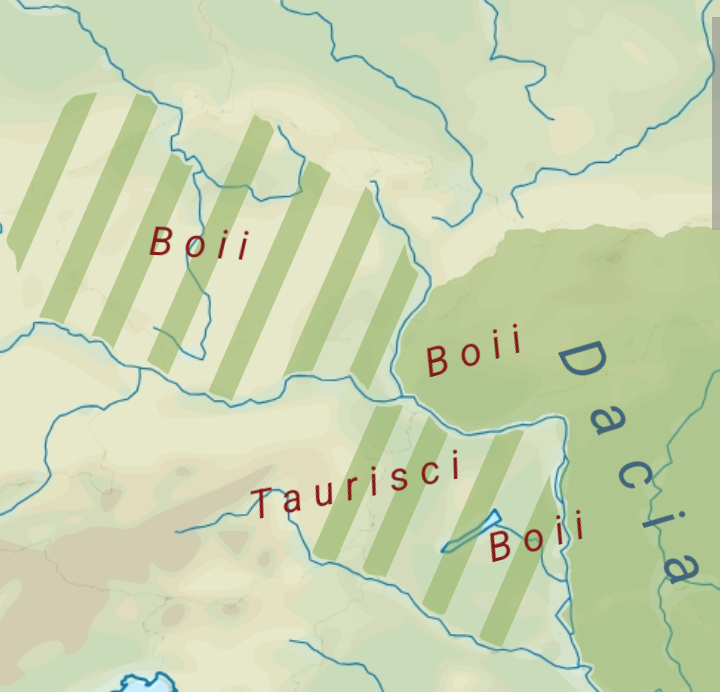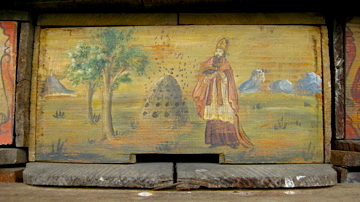|
Carniolan Honey Bee
The Carniolan honey bee (''Apis mellifera carnica'', Pollmann) is a subspecies of the European honey bee. The Carniolan honey bee is native to Slovenia, southern Austria, and parts of Albania, Croatia, Bosnia and Herzegovina, Montenegro, parts of Serbia, Hungary, parts of Romania and North-East Italy. Origin The Carniolan honey bee is a subspecies of the Western honey bee, that has naturalised and adapted to the Kočevje (Gottschee) sub-region of Carniola (Slovenia), the southern part of the Austrian Alps, Dinarides region, southern Pannonian plain and the northern Balkans. These bees are known as Carniolans, or "Carnies" for short, in English. At present this subspecies is the second most popular among beekeepers (after the Italian bee). Qualities It is favored among beekeepers for several reasons, not the least being its ability to defend itself successfully against insect pests while at the same time being extremely gentle in its behavior toward beekeepers. These bees are p ... [...More Info...] [...Related Items...] OR: [Wikipedia] [Google] [Baidu] |
Pannonia
Pannonia (, ) was a Roman province, province of the Roman Empire bounded on the north and east by the Danube, on the west by Noricum and upper Roman Italy, Italy, and on the southward by Dalmatia (Roman province), Dalmatia and upper Moesia. It included the modern regions western Hungary, western Slovakia, eastern Austria, northern Croatia, north-western Serbia, northern Slovenia, and northern Bosnia and Herzegovina. Background In the Early Iron Age, Transdanubia was inhabited by the Pannonians or Pannonii, a collection of Illyrians, Illyrian tribes. The Celts invaded in the Late Iron Age and Gallo-Roman culture, Gallo-Roman historian Pompeius Trogus writes that the Celts were met with heavy resistance from the locals and were not able to overrun the southern part of Transdanubia. Some tribes advanced as far as Delphi, with the Scordisci settling in Syrmia (279 BC) upon being forced to withdraw. The arrival of the Celts in Transdanubia disrupted the flow of amber from the Balti ... [...More Info...] [...Related Items...] OR: [Wikipedia] [Google] [Baidu] |
Slavonian Honey
Slavonian honey () is a specific type of honey producued in the Slavonia region of Croatia. As a food product, it is protected by a designation of geographical origin at the level of the European Union. Characteristics By the production method, it is honey in the honeycomb, honey with honeycomb or parts of the honeycomb, and honey drawn, and includes: * Acacia honey * Linden honey * Rapeseed honey * Sunflower honey * Chestnut honey * Flower honey * Malted oak honey. The percentage of water is a maximum of 18.3%, while the amount of hydroxymethylfurfural is a maximum of 16.5 mg/kg. Also specific is the presence of pollen from the Brassicaceae, Robinia spp. and Rosaceae in Slavonian honey, as accompanying pollen (at least 16%) or secondary pollen (at most 15%). It is produced by native "gray bees" (''Apis mellifera carnica'') of the Pannonian subtype. Production It has been produced commercially since the 1980s. Honey is produced in Vukovar-Srijem, Osijek-Baranja, Požega-S ... [...More Info...] [...Related Items...] OR: [Wikipedia] [Google] [Baidu] |
Anton Janša
Anton Janša (c. 20 May 1734 – 13 September 1773) was a Carniolan apiarist and painter. Janša is known as a pioneer of modern apiculture and a great expert in the field. He was educated as a painter, but was employed as a teacher of apiculture at the Habsburg court in Vienna. Biography Anton Janša was born in a family of nine children from Slovene parents in Breznica, Carniola (now in Slovenia). His exact birth date is not known, however, he was baptised on 20 May 1734. At a young age Janša, together with his brothers Tine and Lovro, showed a great interest in painting (they had a studio in their barn). All three brothers, despite being illiterate, went to Vienna and entered the painters' academy there. Ceferin wrote "Anton rose to the challenge, and even distinguished himself, winning the prestigious state scholarship for a study tour of Italy, awarded only to exceptional students." His two brothers actually finished their studies at the academy and became profes ... [...More Info...] [...Related Items...] OR: [Wikipedia] [Google] [Baidu] |
Nectar Source
A nectar source is a flowering plant that produces nectar (plant), nectar as part of its reproductive strategy. These plants create nectar, which attract pollinating insects and sometimes other animals such as birds. Nectar source plants are important for beekeeping, as well as in agriculture and horticulture. Their use is particularly important for organic agriculture and organic horticulture, where they serve not only to attract pollinators for crops, but also provide habitat for beneficial insects and other animals that provide pest control. In gardens, nectar sources are often provided to attract butterflies and hummingbirds as well. For honey bees While many plants produce nectar, beekeepers prefer to place their hives near certain plants, for the qualities of the honey produced. Certain agricultural crops, such as clover and buckwheat, are used to make Monofloral honey, specific honeys, which often command a premium price. Some plants are avoided by some beekeepers (and ... [...More Info...] [...Related Items...] OR: [Wikipedia] [Google] [Baidu] |
Diseases Of The Honey Bee
Diseases of the honey bee or abnormal hive conditions include: Pests and parasites ''Varroa'' mites ''Varroa destructor'' and ''V. jacobsoni'' are parasite, parasitic mites that feed on the fat bodies of adult, pupal and larval bees. When the hive is very heavily infested, ''Varroa'' mites can be seen with the naked eye as a small red or brown spot on the bee's thorax. ''Varroa'' mites are carriers for many viruses that are damaging to bees. For example, bees infected during their development will often have visibly Deformed Wing Virus, deformed wings. ''Varroa'' mites have led to the virtual elimination of feral bee colonies in many areas, and are a major problem for kept bees in apiary, apiaries. Some feral populations are now recovering—it appears they have been natural selection, naturally selected for ''Varroa'' resistance. ''Varroa'' mites were first discovered in Southeast Asia in about 1904, but are now present on all continents, following their introduction to ... [...More Info...] [...Related Items...] OR: [Wikipedia] [Google] [Baidu] |
Propolis
Propolis or bee glue is a resinous mixture that honey bees produce by mixing saliva and beeswax with exudate gathered from tree buds, sap flows, or other botanical sources. It is used as a sealant for unwanted open spaces in the beehive. Propolis is used for small gaps (around or less), while gaps larger than the bee space (around ) are usually filled with burr comb. Its color varies depending on its botanical source, with dark brown as the most common. Propolis is sticky above , while at lower temperatures, it becomes hard and brittle. When foraging, worker bees primarily harvest pollen and nectar, while also collecting water and plant resin necessary for the production of propolis. The chemical composition and nature of propolis depend on environmental conditions and harvested resources. Types Mixed types of propolis found in European countries with a moderate climate include two or more sources of plant resins (plant species) identified by composition, such as aspen, M ... [...More Info...] [...Related Items...] OR: [Wikipedia] [Google] [Baidu] |
European Dark Bee
The ''Apis mellifera mellifera'' ( commonly known as the European dark bee) is a subspecies of the western honey bee, evolving in central Asia, with a proposed origin of the Tien Shan Mountains and later migrating into eastern and then northern Europe after the last ice age from 9,000BC onwards. Its original range included the southern Urals in Russia and stretched through northern Europe and down to the Pyrenees. They are one of the two members of the 'M' lineage of ''Apis mellifera'', the other being in western China. Traditionally they were called the ''Black German Bee'', although they are now considered endangered in Germany. However today they are more likely to be named after the region in which they live, such as the British black bee, the Native Irish Honey Bee, the Cornish black bee and the Nordic brown bee, even though they are all the same subspecies, with the word "native" often inserted by local beekeepers, even in places where the bee is an introduced foreign specie ... [...More Info...] [...Related Items...] OR: [Wikipedia] [Google] [Baidu] |
Pollen
Pollen is a powdery substance produced by most types of flowers of seed plants for the purpose of sexual reproduction. It consists of pollen grains (highly reduced Gametophyte#Heterospory, microgametophytes), which produce male gametes (sperm cells). Pollen grains have a hard coat made of sporopollenin that protects the gametophytes during the process of their movement from the stamens to the pistil of flowering plants, or from the male Conifer cone, cone to the female cone of gymnosperms. If pollen lands on a compatible pistil or female cone, it Germination, germinates, producing a pollen tube that transfers the sperm to the ovule containing the female gametophyte. Individual pollen grains are small enough to require magnification to see detail. The study of pollen is called palynology and is highly useful in paleoecology, paleontology, archaeology, and Forensic science, forensics. Pollen in plants is used for transferring Ploidy#Haploid and monoploid, haploid male genetic ma ... [...More Info...] [...Related Items...] OR: [Wikipedia] [Google] [Baidu] |




